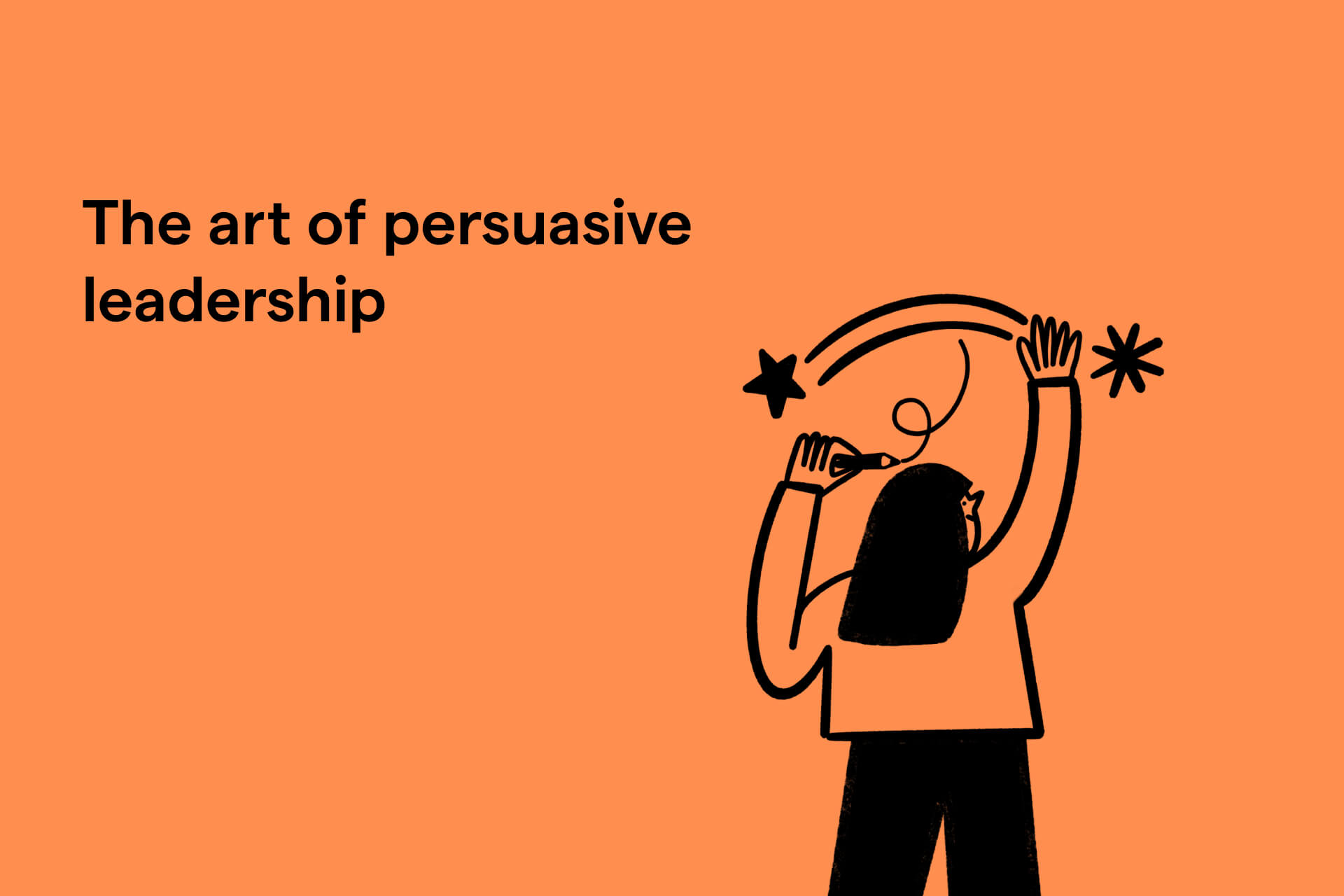
Individual
A self-facilitated program to boost your mental fitness for personal and professional growth
This website will offer limited functionality in this browser. We only support the recent versions of major browsers like Chrome, Firefox, Safari, and Edge.

Select the experience that fits your needs

A self-facilitated program to boost your mental fitness for personal and professional growth

A self-facilitated mental fitness program with exclusive pricing for 2 to 25 individuals

Explore coach-led mental fitness programs with workshops tailored to your organization
Mental Fitness

Whether leading a team, working in sales, or navigating personal relationships, developing persuasion skills can significantly impact your success.
“In every role that you play, every relationship that you’re in, persuasion skills are something that you’re constantly in need of. You’re constantly trying to persuade someone of a product, an idea, an action,” says Shirzad Chamine, CEO and founder of Positive Intelligence.®
To sharpen your persuasion skills and become a more impactful leader and individual, you must understand the essence of persuasion, learn the neuroscience behind it, and work to build mental fitness.
At the core of persuasion lies mental fitness — a concept that emphasizes the power of positivity.
Mental fitness refers to a state of wellbeing wherein you can effectively manage your emotions, handle stress, and maintain a positive mindset. It involves developing resilience, self-awareness, and focus amid life’s distractions.
Mental fitness is about honing the cognitive and emotional abilities that enable peak performance in various aspects of life, including leadership persuasion.
Persuasion, at its core, is about offering a credible solution to a deeply felt need. It’s not just about addressing the surface-level need but illuminating it so vividly that you can feel its significance. This emotional connection paves the way for persuasion.
When it comes to persuasion, moving up the hierarchy from a need to an aspiration is essential. What differentiates a need from an aspiration?
A need represents why a person wants something. An aspiration represents the bigger why. Aspiration is the deeper, underlying need, and it’s more inspiring and motivating.
For example, if the felt need is, “I want to be more productive,” then the deeper aspiration could be, “I want to spend more time with my daughter,” or “I want to be a more loving and impactful spouse or parent.”
By shifting from a focus on the need to a focus on the aspiration, you can tap into the profound why behind the need. Try these steps for shifting from need to aspiration:
1. First, ask, “Why is that important?” several times. You’ll eventually uncover the aspirations and the deeper desires that drive actions. The solution must resonate with these aspirations to be truly persuasive.
2. Next, consult the wiser elder self. Looking back at the end of life, what would the wiser elder self think is important in this situation?
The key to persuasion lies in connecting your idea, product, or solution to the genuine needs and aspirations of the audience. Remember, it’s never about you; it’s always about them.
Your message should pass through the “What’s in this for me?” filter in the audience’s mind. Your solution is a gift tailored to enrich their lives. Avoid the traps of the Saboteurs — the internal naysayers — and focus on delivering a compelling, needs-based offering.
To understand the neuroscience of persuasion, you must learn the roles of the Survivor Brain (left brain) and the PQ Brain (right brain). PQ stands for Positivity Quotient and measures the relative strength of your positive versus negative mental muscles.
The Survivor Brain deals with needs, data, and analytics, while the PQ Brain thrives on aspirations, stories, and emotions.
To be persuasive, you must guide your audience from the left-brain analytical realm to the right-brain emotional space. The brain’s PQ Channel is driven by energy and emotion, whereas the brain’s Data Channel is driven by words and data. The PQ Channel will always trump the Data Channel in communication.
The emotion and energy contained in the brain’s PQ Channel are contagious. As a leader and influencer, if you are in a negative state of mind, also known as Saboteur mode, you’ll shift your audience to Saboteur mode. The audience’s negative thoughts will then interfere with your ability to persuade them.
The reverse is also true. If you are in a positive state of mind, also known as Sage mode, you’ll shift your audience to Sage mode, where they can be open to persuasion. Your positivity, empathy, and emotions must be authentic — the PQ Channel cannot be fooled.
Saboteurs are the voices in your head that generate negative emotions. They can derail your persuasive efforts, and you must learn to recognize them. From the Judge to the Victim, each Saboteur presents unique challenges. Practice identifying your predominant Saboteurs so you can better understand how they impact your ability to persuade. Awareness is the first step toward overcoming Saboteur hurdles.
“Every one of the Saboteurs sabotages your effectiveness in persuasion,” says Chamine. Here’s how:
Judge of Self: Diminishes what you’re willing to ask for.
Judge of Others: Diminishes what you think others would be capable of.
Avoider: Doesn’t address your audience’s biggest and most important fear or objection.
Controller: Fixates on HOW rather than just the desired outcome, leaving little room for flexibility.
Hyper-Achiever: Plays it safe and doesn’t aim for the most significant possible impact due to fear of failure or rejection.
Hyper-Rational: Focuses too much on the data and details and too little on generating emotional buy-in. Misses key non-verbal signals in the PQ Channel and doesn’t adjust.
Hyper-Vigilant: Displays muted enthusiasm about the vision and possibility by being overly cautious and conservative and not thinking out of the box. Doesn’t aim for the biggest impact due to worry about what could go wrong.
Pleaser: Is too concerned about being liked and may not challenge the audience and expose their needs. Plays it safe to avoid rejection.
Stickler: Focuses too much on perfecting the details and too little on the big picture and inspiration.
Restless: Is not present enough to pick up on moment-by-moment clues about how the interaction is going and how to adjust. Sacrifices depth for variety.
Victim: Overly focuses on the audience’s negative reactions or objections, feeling discouraged and taking things personally.
Your Sage generates positive emotions while handling life’s challenges. It is the antidote to your Saboteurs. Activating your 5 Sage Powers — Empathize, Explore, Innovate, Navigate, and Activate — enables Sage contagion, shifting you and your audience from Saboteur mode to Sage mode.
Each Sage Power creates Sage contagion through the PQ Channel, which helps shift your audience from Saboteur mode to Sage mode.
1. Empathize: Generates deep trust to enable you to be more persuasive.
2. Explore: Shifts the audience into curiosity, openness, and exploration.
3. Innovate: Shifts the audience to out-of-the-box thinking to overcome perceived obstacles.
4. Navigate: Inspires a connection to deeper values, aspirations, and the bigger why.
5. Activate: Sparks fearless, clear-headed, laser-focused action.
Performing PQ Reps activates your PQ Brain and the 5 Sage Powers. A PQ Rep is a 10-second hyper-focus on one of your five senses. To perform a PQ Rep, close your eyes and spend 10 seconds focusing only on one physical sensation like touch, sight, or sound. Visit the PQ Gym for some guided PQ Rep sessions.
Here’s how each of your audience’s Saboteurs significantly affects your ability to be persuasive:
Judge: Creates a sense of not believing in oneself as an agent of positive change. Focuses on obstacles instead of possibilities.
Avoider: Avoids voicing real objections and procrastinates committing.
Controller: Causes anxiety about losing control through unexpected aspects of the solution.
Hyper-Achiever: Will play only if assured a win. Focuses on their own achievement and not on serving others.
Hyper-Rational: Demands excessive data and assurance. Lacks the inspiration and emotion that enable bold action.
Hyper-Vigilant: Is overly anxious about all the possible risks and unknowns.
Pleaser: Is worried about displeasing others by saying yes to the solution. Tells others what they want to hear and creates a false sense of positivity.
Stickler: Focuses on unnecessary details rather than the big picture and feels anxious about disrupting the established order.
Restless: Has trouble staying focused and following through on the solution and the ideas.
Victim: Will often say, “This might work for others but might not work for me.” Presumes there will be problems.
How do you shift the audience’s reactions when persuading? Anticipate what their Saboteurs might say and prepare a preemptive response. For example:
Remember that true empathy builds trust, curiosity fosters openness, innovation encourages creativity, navigation inspires action, and activation fuels fearlessness. Shifting your audience to Sage mode opens the door to embracing new ideas.
Preparation is key to persuasion. Define the gift, understand the need, explore the aspirations, craft key messages, develop impactful stories, anticipate Saboteur objections, and prepare Sage responses. This comprehensive approach equips you to face any persuasive challenge with confidence.
“Persuasion is such a critical part of us being effective in all of our roles,” says Chamine.
Your ability to persuade successfully is rooted in the principles of mental fitness. Whether you’re leading a team, making a sales pitch, or nurturing personal relationships, being mentally fit equips you with the tools to navigate persuasive leadership successfully.
Incorporating mental fitness practices into your daily routine can significantly enhance your persuasion skills. By cultivating self-awareness, empathy, and emotional resilience, you can connect with others authentically and influence them positively.
To improve your persuasion skills, take the free Saboteur Assessment and identify the Saboteurs that may be holding you back.
Then, explore the PQ Program for mental fitness to help you take your persuasion skills to the next level.

